前言
在很多公司,使用dubbo做微服务治理也是很常见的一种方式,简单来说,就是服务提供者一方将服务注册并发布到注册中心,消费者订阅服务,然后像调用本地接口一样;
但是在实际实践中,经常有这么一种场景,就是对于服务消费者来说,当调用服务生产者的服务接口时,一旦服务提供者的接口抛出异常,如果消费端不使用 try-catch 捕捉的话,在进行问题排查、故障分析时,将会是个头疼的问题;
对于消费端来说,不可能在所有的调用dubbo接口的地方都用 try-catch进行包裹吧?有没有一种办法,用来统一处理这样的服务接口调用异常方式呢?答案是肯定的,可以使用dubbo自定义过滤器,通过过滤器统一拦截调用异常问题;
操作步骤
一、创建一个公共的用于处理异常的工程
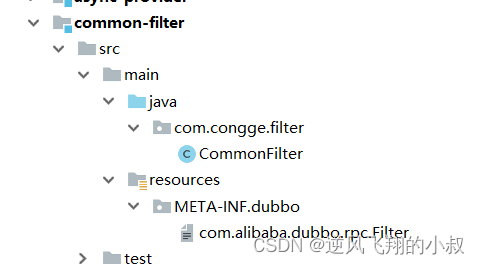
ComnonFilter 类,只需要实现dubbo提供的Filter 接口即可
package com.congge.filter;
import cn.hutool.core.date.DateUtil;
import com.alibaba.fastjson.JSON;
import org.apache.dubbo.common.Constants;
import org.apache.dubbo.common.extension.Activate;
import org.apache.dubbo.rpc.*;
import org.apache.dubbo.rpc.service.GenericService;
import java.util.Date;
@Activate(group = {Constants.PROVIDER,Constants.CONSUMER})
public class CommonFilter implements Filter {
@Override
public Result invoke(Invoker<?> invoker, Invocation invocation) throws RpcException {
Result result = null;
try {
result = invoker.invoke(invocation);
if (result.hasException() && GenericService.class != invoker.getInterface()) {
Throwable exception = result.getException();
String data = String.format("
[level]:Error,[createTime]:%s,[serviceName]:%s,[methodName]:%s,[inputParam]:%s",
DateUtil.formatDateTime(new Date()),
invoker.getInterface().getName(),
invocation.getMethodName(),
JSON.toJSONString(invocation.getArguments()));
System.out.println(data);
System.out.println(exception);
}
}catch (RuntimeException e){
String data = String.format("
[level]:Error," +
"[createTime]:%s," +
"[serviceName]:%s," +
"[methodName]:%s," +
"[inputParam]:%s",
DateUtil.formatDateTime(new Date()),
invoker.getInterface().getName(),
invocation.getMethodName(),
JSON.toJSONString(invocation.getArguments()));
System.out.println(data);
System.out.println(e);
}
return result;
}
}
在resources目录下创建相关的目录,注意文件路径和文件名称是固定的,文件内容如下

二、生产端配置文件改造
1、pom中导入上面这个公共依赖的maven工程坐标,然后在配置文件中,将过滤器的名称配置进去
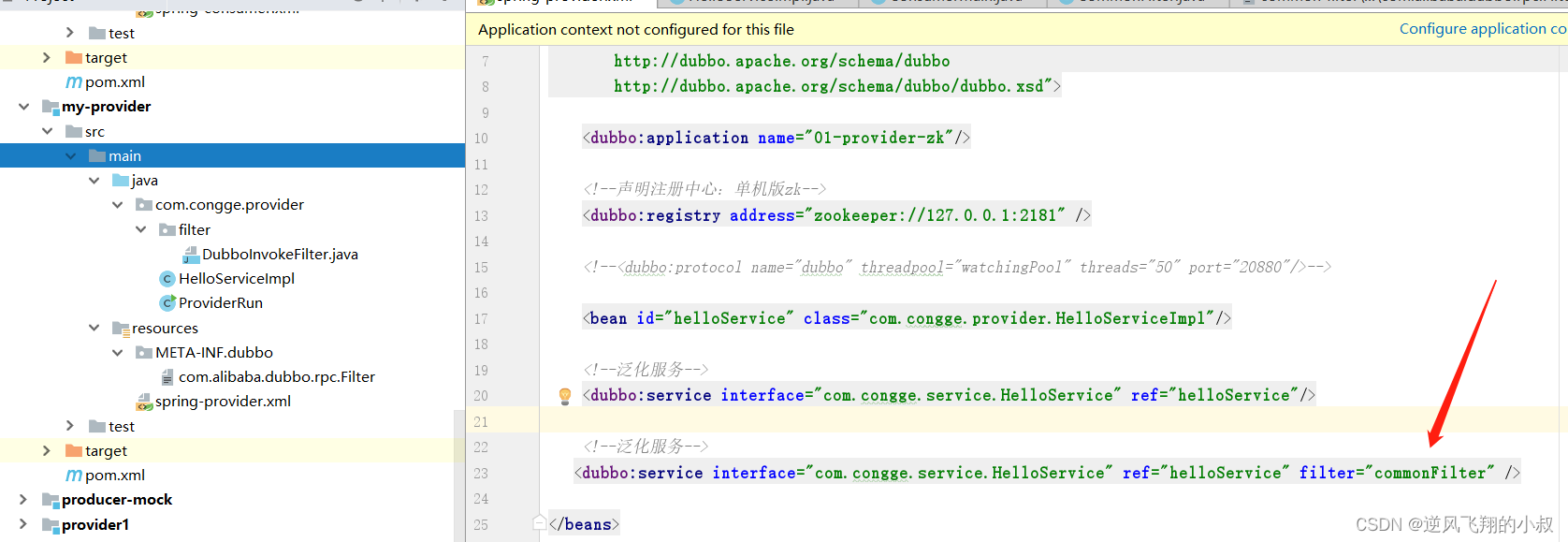
2、生产端提供的服务中手动添加一个异常
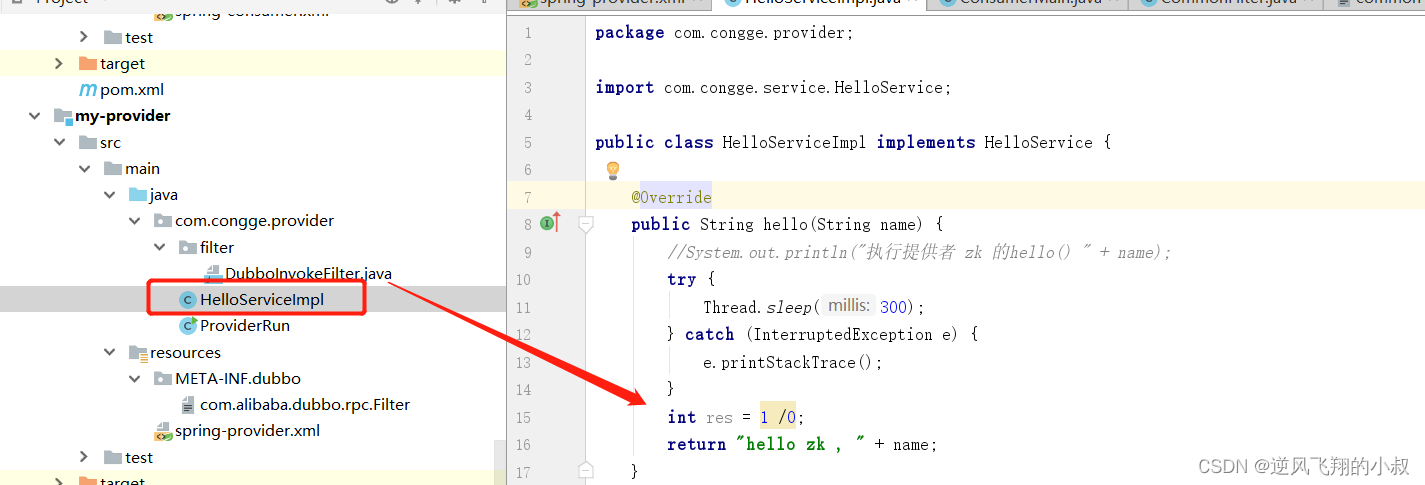
三、消费端配置
消费端暂时无需做其他配置
import com.congge.service.HelloService;
import org.springframework.context.ApplicationContext;
import org.springframework.context.support.ClassPathXmlApplicationContext;
import java.io.IOException;
public class ConsumerMain {
public static void main(String[] args) throws Exception {
ApplicationContext ac = new ClassPathXmlApplicationContext("spring-consumer.xml");
HelloService service = (HelloService) ac.getBean("helloService");
String hello = service.hello("Hello Provider");
System.out.println(hello);
}
}
测试
1、启动本地的zk服务

2、启动生产端服务
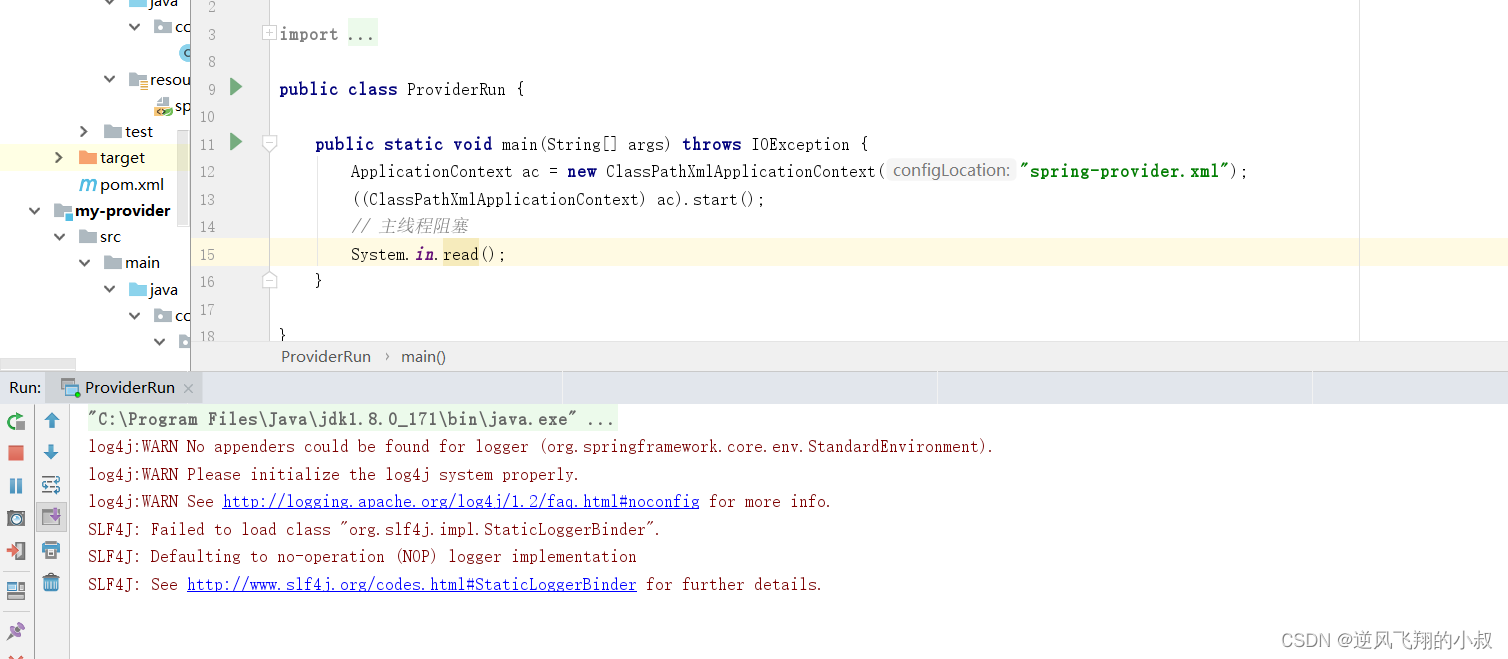
3、启动消费端服务模拟服务调用
消费端报出的异常信息
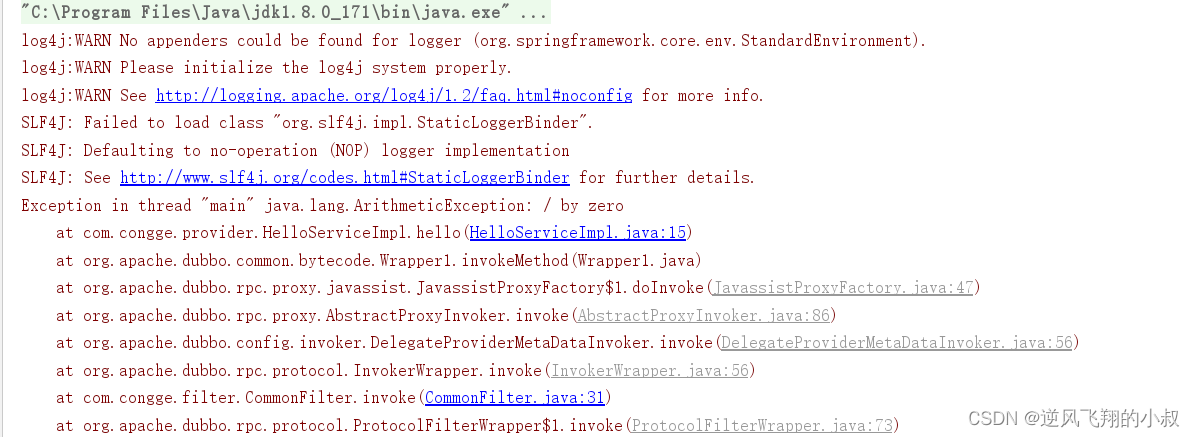
由于我们将过滤器配置在生产端了,这时再去观察生产端的控制台,可以看到,调用异常的信息也输出了

使用场景说明
通常来说,在微服务的调用链路比较长的时候,在消费端采用上面的方式进行配置,是有一定意义的,可以较快的定位到调用的服务接口,以及抛出的具体的问题原因,便于服务提供者快速进行问题定位和修复























 4052
4052











 被折叠的 条评论
为什么被折叠?
被折叠的 条评论
为什么被折叠?








